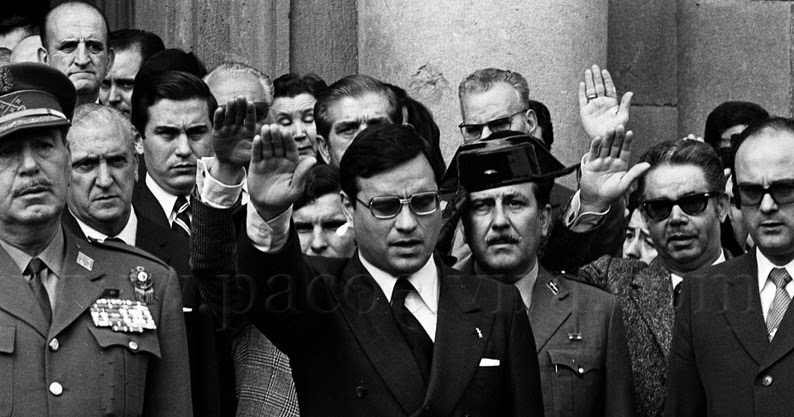Ex-minister indicted on four counts of homicide by an Argentine judge investigating cases stemming from the Franco dictatorship in Spain. This is according to court papers seen by Reuters on Saturday.
Sitting in Buenos Aires, Judge Maria Servini de Cuba issued the ruling against Rodolfo Martin Villa, 87. Martin Villa was interior minister between 1976 and 1979, and Minister for Trade Union Relations from 1975-6.
He has previously been accused of ordering the executions of five workers’ during a labour strike in Vitoria in March 1976. Argentine human rights lawyers made the accusation in 2013.
The judge wrote she considered Martin Villa “the prima facie perpetrator criminally responsible for the crime of aggravated homicide, repeated on at least four occasions, of which Pedro María Martínez Ocio, Romualdo Barroso Chaparro, Francisco Aznar Clemente and Germán Rodríguez Saíz were victims”.
Ex-minister Martin Villa will appeal
Martin Villa told the Spanish newspaper ABC: “I am calm. I will appeal.”
In 1977, Spain passed an amnesty law. It pardoned crimes committed by the Franco dictatorship. To get round this, hundreds of Spaniards have addressed an Argentine court.
Using the principle of universal justice, they ask for crimes committed against them and their families during the 36-year Franco regime to be addressed.
Martin Villa continued repressive dictatorship structures
Judge Servini wrote Martin Villa played a key role in the repressive structures of the dictatorship, which continued in the years immediately after Franco’s death in 1975.
“It is great news for the victims, who have been claiming for many years,” said Máximo Castex, a lawyer for the relatives of the victims.
The judge ordered Martin Villa, who lives in Madrid, to be detained but said it was unlikely to happen.
A brief overview of the Franco dictatorship
The legacy of Franco in Spanish history remains controversial. His rule consisted of both brutal repression, with tens of thousands killed, and economic prosperity.
The Spanish Civil War began in July 1936 and officially ended with Franco’s victory in April 1939. It left between 190,000 to 500,000 dead.
The first decade of Franco’s rule saw continued repression and the killing of an undetermined number of political opponents.
By the start of the 1950s Franco’s state had become less violent. However, during his entire rule, Franco suppressed or tightly controlled non-government trade unions and all political opponents across the spectrum by all means. Those means included everything up to and including violent police repression.
Role of women
Official propaganda confined the role of women to family care and motherhood. Immediately after the civil war most progressive laws passed by the Republic aimed at equality between the sexes were nullified. Fathers and husbands managed women’s affairs and economic lives. Until the 1970s, a woman could not open a bank account without having it co-signed by her father or husband.
Monarchy
Franco declared Spain a monarchy but did not install a king. He eventually took the title of de facto regent. Eventually, Franco decided to name a monarch to succeed his regency. In 1969 Franco nominated as his heir-apparent Prince Juan Carlos de Borbón.
Death and Pact of Forgetting
On 30 October 1975 he fell into a coma and went on life support. Franco’s family agreed to disconnect the life-support machines. Officially, he died a few minutes after midnight on 20 November 1975 from heart failure, at the age of 82.
When he died in 1975, the major parties on both sides agreed to follow the Pact of Forgetting. To secure the transition to democracy, they agreed not to have investigations or prosecutions dealing with the civil war or Franco.
Since 1978, the national anthem of Spain, the Marcha Real, does not include lyrics introduced by Franco.


